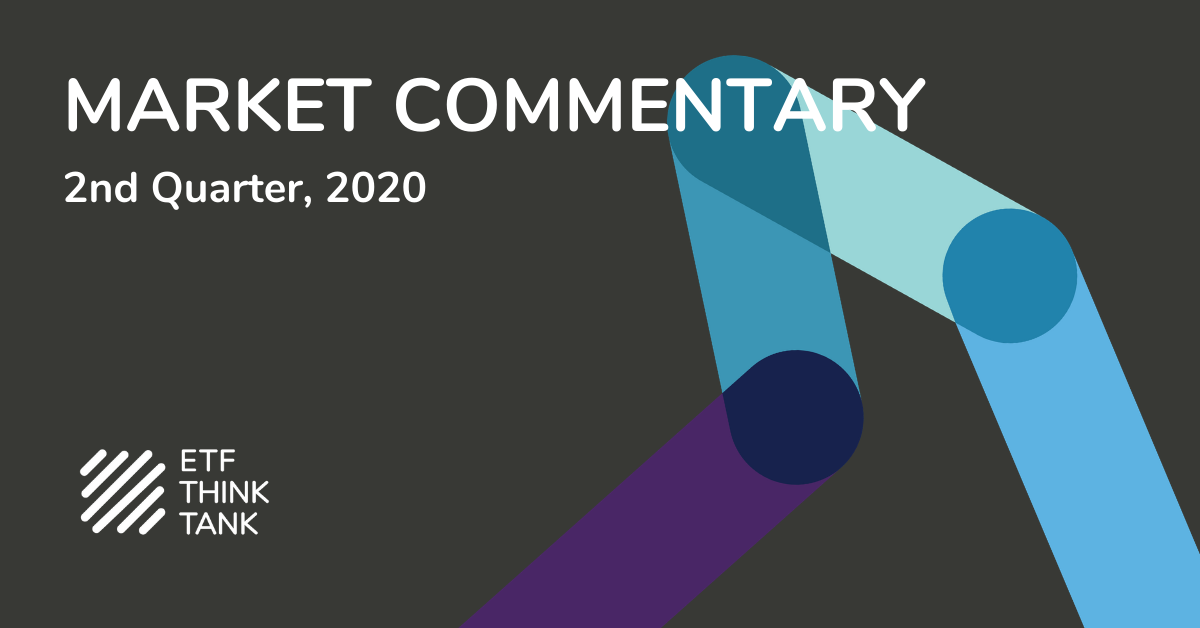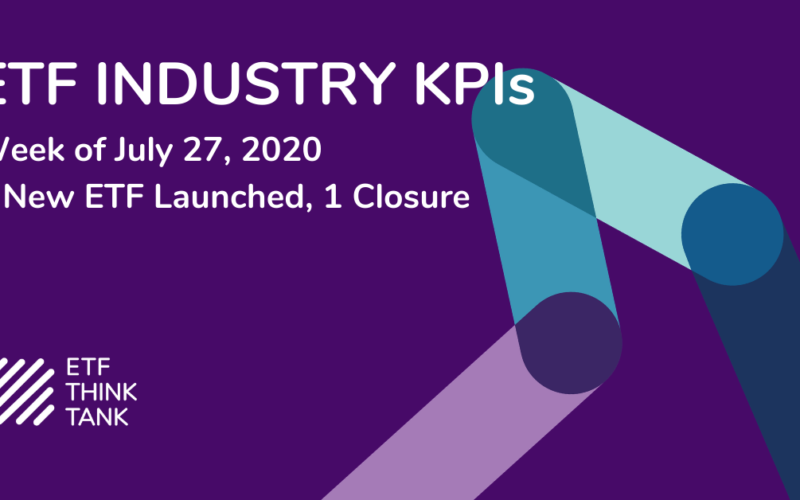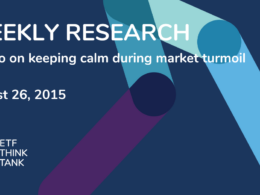The Tail of Infinite Outcomes, Hindsight Bias & the Buy the Dip Market Strategy
It all seemed so easy looking backwards, didn’t it? Markets were down 30% faster than ever before and the Fed stepped in to save the day, so now we’re just waiting around for a vaccine and a return to normal, right? Some investment firms are going as far as offering 4 or 5 different outcomes based on a multitude of unknown variables; maybe a volatility index (VIX) of 25 is actually low, all things considered. Has there ever been a non-war market environment where we all seemingly agreed on such a diverse set of potential market outcomes over the next 2 years? Despite all of this, markets just posted one of their best quarters in history. The world has never produced and mass distributed a vaccine in an 18-month time frame, and yet many are predicting that with similar accuracy to the next iPhone release. We will never claim to be virus experts here at Toroso, but it appears we are still collectively unsure if antibodies last more than 3-6 months. Individuals’ desire to get vaccinated still leaves the questions of it would take to return to normal once a vaccine is produced.
A few commentaries ago, we did a review of the book Sapiens, discussing the importance of storytelling for our collective society, and the role LLCs play in our collective storytelling. We also discussed the crucial need for markets to endlessly believe in a bigger tomorrow than today. Why? We got here by mortgaging the current for the future, in hopes of a large, more robust economy tomorrow. This is a now the start of the 6th decade in this global debt cycle.
Our government feels as intertwined with capitalism as ever. Whether through lobbyists or political contributions, companies are influencing politics more than any time in recent market history. The recent antitrust law discussions regarding our largest tech giants put into perspective how dominating they have truly been. Going back to George W Bush, antitrust law has primarily focused on price fixing for the end consumer. We expect this will change in the near future; focus on how they treat their employees, motive for acquisitions, and effects on smaller retailers may all come back into consideration. What do we do when the monopolists eat up all of the competitors (or replicate their products) on their platform?
In our last commentary, we wrote about how big the biggest tech companies were in relation to the rest of the market. The gap has grown significantly this year with new all-time highs, even after setting new all-time highs last year. Quantitative easing (QE), on some level, seems to be benefiting those with the highest credit rating and best growth stories. This ends up focusing on big global IOT technology companies as we’ve noted over the past 6 months. You can see below a chart of both the largest companies in the world and the ones who have added the most “contribution to return” to global equities this year, measured by MSCI ACWI ETF (ACWI):

These 14 companies have contributed 5.45% to ACWI this year, and ACWI is still -0.91% on the year. All are up to double digits, and Apple, Microsoft and Amazon, the top 3, have contributed over 3% to ACWI’s return themselves. These companies fall into two buckets. Some are specifically digital payment / work from home / gig economy companies that have benefited from the massive adoption of new technology and processes. The others are the first, combined with the Global Internet of Things companies most benefited by significant amounts of cheap capital. Apple, Microsoft, Amazon, Facebook and Alphabet now make up over 22% of the S&P 500 (over 40% of Nasdaq) – Alibaba and Tencent are dominating international markets similarly. All companies that contributed over 0.15% to ACWI’s return this year are listed above (and one didn’t, Nestle, which is just listed due to its size).

When looking historically for links between governments and monopolies, we recommend looking back to Japan and Germany. Both actually had political parties run by some of their largest corporations. The US is far from having similar issues, but the avoidance of such issues, through antitrust law, may be what gives the Chinese IOT companies the next leg up.
We all seem to agree that the future is unknown, and we all have similar assumptions of what a world without a vaccine may be like, or alternatively, a world where we are all vaccinated and congregating indoors in large groups. But are we really sure our economy will be bigger in 2021 than it was in 2019? Then there’s the next leg of the conversation… credit worthiness.
As we mentioned before, the US credit outlook was just downgraded for the first time since 2011. What about the credit worthiness of corporations or individuals? Will banks not care about corporate or personal earnings when issuing credit in 2021 for the calendar year of 2020? What about the wave of potential evictions expected to come? Have central banks come so far that stimulus checks will be credited as income for loan purposes?
Just like we said about QE’s actual effect on the economy years ago, sometimes it doesn’t actually have to take its long term intended effect, people just need to believe it will. What happens if we suddenly think there’s an actual likelihood of a smaller economy in 5 years? It doesn’t have to actually happen to do damage. Increased fear of it occurring, considering where debt is, how underfunded our pensions are, where commercial real estate is and the closed checkbooks of university endowments, this could create enough panic to make it a problem. In addition to the 150,000 US lives lost to COVID-19, the likelihood of half a million fewer births in 2021 could jumpstart these fears in an already aging population.
Back to Markets…
In all of this, we have lost sight of the bigger picture. In January we wrote that there was a lot of “dry tinder” in the market. Growth prospects for the future were bleak at best. Any slip-up in our never-ending growth cycle might be more costly than expected. What markets are missing most is that our debt cycle, that was just shifted into overdrive in response to COVID-19, still needs tomorrows economy to be bigger than today. We believe that as the longer term reality of our status quo / partially quarantined economy sets in, the idea of a shrinking economy for years may come into play.
What We Know
- We are in the mist of the greatest innovation period since the late 1800s / early 1900s. Back then, it was the telephone, electricity, and the internal combustion engine. Today, we are experiencing innovation breakthroughs in how we work (the gig economy), blockchain, genome sequencing, robotics, energy storage, deep learning and artificial intelligence. Innovation adoption rates jumped 3-5 years in 3-5 months vs previous expectations due to COVID-19.
- Tech Innovation is deflationary
- The de-globalization trend continues to gain steam politically and with virus fears (also deflationary)
- Money Supply (M2) has skyrocketed thanks to the Federal Reserve (currently matching the plummet in the Velocity of Money)
- De-globalization and increased M2 are both inflationary
- Danger of doing too little is greater than the danger of doing too much, which means some period of inflation amidst a rebound is likely.
Our markets are currently cycling between increased innovation adoption and the deflation that comes with that. Central banks are yearning for some level of suitable inflation with the potential for velocity of money to soar if the economy ever does fully reopen. A VIX of 25 is starting to sound more reasonable as a low vol VIX time period in the face of uncertainty.
The Economy
- Real GDP was down -32.9% for the second quarter and -9.5% year over year
- US unemployment is at 13.03%. U6 unemployment, taking into account part time and marginally employed workers, is at 18%
- US personal savings rate as a percentage of disposable income is at 19%, after peaking at 33.5%. The number has historically never crossed above 15% until now.
In March, we rebalanced into equities because there was nothing but unknowns in the market at that time. Today, there are similar unknowns surrounding the virus, as we really have not learned that much collectively in the last 4 or 5 months, but the market is treating the Fed as a complete known. Should they? You could argue that we have a clear picture of their intentions; inflation target, protecting the sanctity of the 60/40 portfolio, and maybe most importantly, asset price protection. One of the biggest risks in our eyes is political pushback to further stimulus from the Federal Reserve. The average citizen is not happy with how funds were allocated for use in the Paycheck Protection Program (PPP), and even the ones who needed it and received it are likely finding themselves cash poor once again.
Our Response to the Unknown, and the Difference Between Intelligent Rebalancing and Buying the Dip
How do you manage portfolios with so much uncertainty? We play the extremes. Pair disruptive innovative themes with defensive assets that are negatively correlated to equity markets and rebalance on portfolio drift. We purchased equities in March and trimmed them in July, not due to market timing or attempting to buy the dips, but just due to watching our portfolio drift and trimming assets / rebalancing at extremes.
Our best ideas for defense today are exactly what they were on 12/31/2019, and we’ve been rebalancing them as they have individually had their extended upsides at different parts of this year, whether it be gold, long term treasuries, negatively correlated market neutral vehicles etc. Our list of preferred thematic vehicles has grown somewhat, but also remains mainly intact from where it stood at the end of last year. It’s impossible to know exactly how large the innovation adoption is within the thematic space. Analysts do a poor enough job charting out exponential growth in traditional markets, let alone a full fundamental shift in how business is done. Some will be overvalued, but we expect many to have PEG ratios that are ultimately lower today than they were on December 31st last year.
We feel confident saying the next 24 months cannot pass without at least one whipsaw-like event. We also felt confident saying that in March. Our approach really has not changed much since we started allocating away from traditional market cap weighted indexes (on both equities and fixed income) in the fall of 2019.
With a strong tech earnings season passed, we would expect some volatility between now and the end of the year and a less optimistic earnings period next quarter. However, we would certainly not rule out the possibility of it not occurring. With all of this uncertainty in the markets, we hope this gives you some assurance in our process.
US equities
They say in life you get what you pay for, and when it comes to market cap weighted ETFs, we are beginning to agree.

It’s hard to quantify earnings estimates years out in this environment, so we take the numbers here with a grain of salt. We have trouble seeing how the PEG ratio on the S&P 500 is anywhere other than at its all-time high, given expectations for markets over the coming few years. The chart below is really most telling for this year as it has been no more than a shift in market sentiment driven by Central Bank actions that have driven valuations up while cutting earnings.

After returning 20.54% in Q2 and another 5.64% in July, the S&P 500 measured, by iShares Core S&P 500 ETF (IVV), is up 2.38% through the end of July. While we know much of this is in part due to the large tech names we covered earlier, the category as a whole still significantly outpaced small caps, which returned only 8.54% in Q2, lost ground in July, returning -0.15%, and is still down -16.25% for the year. Central bank actions continue to hurt small caps, but plenty of opportunities exist in more selective thematic vehicles.

International Developed Equities
MSCI ACWI ex US, measured by the iShares MSSCI ACWI ex US ETF (ACXW), returned 16.14% for Q2 and 4.42% for July, putting it at -7.2% for the year. For a while there wasn’t much excitement out of Europe from an investment perspective. They have been a value trap for quite some time, but we believe the issuance of common bonds in the eurozone is a game changer. The Likelihood of the eurozone existing in 2030 just went from 85% to 95% in our eyes, and they have a fresh pool of debt to issue from. The US has been the best house in a bad neighborhood of developed economies for a while, but the eurozone just got a fantastic renovation and now looks quite secure. The dollar move to the downside in July reflected this.

Emerging Market Equities
Emerging market Internet of Things (IOT) and ex-state-owned enterprise funds in this space continue to add alpha over broad benchmarks. Many of the IOT funds avoid state-owned enterprises all together. As a whole, emerging markets, measured by the iShares Emerging Market ETF (EEM), was up 17.93% in Q2 and 8.86% in July, coming in at -2.03% for the year. EMQQ EM Internet & Ecommerce ETF returned 44.7% for Q2, 9.05% for July, and is up 44.65% for the year. Given the explosion of innovation adoption and the lack of antitrust issues, these companies might have the same PEG ratios today that they had in December 2019, even with the massive 44% upside.

Fixed Income
Much of the fear in March was due to a supreme liquidity crunch unlike anything ever seen in bond markets. In response, the Fed stepped in and did its part, including purchasing some ETFs directly.

The iShares core US Aggregate bond ETF (AGG) is up 7.65% as duration has been king. iShares 20+ year treasury ETF (TLT) is up 26.87%, accounting for most of the gains in fixed income this year. High yield is still slightly negative on the year but almost flat. We dislike market cap indexes here even more than on the equity side.

Alternatives
We continue to recommend a mixed alternative bucket consisting of long-term treasuries, gold, and AGFiQ US Market Neutral Anti-Beta Fund (BTAL). All 3 are up double digits this year. If you can access crypto, adding Bitcoin into this mix would also help, despite the complex execution. This year, we were able to rebalance between our alternatives and equities at market dislocations, which was very beneficial for YTD returns. Gains in alts have rotated, so we have been fortunate to selectively trim the best without having to make a judgement call. Initially it was more traditional longer term treasuries and long short equities, but as of late, the run has been in gold.
Conclusion
We continue to recommend a barbell approach to risks within asset classes (think equities and fixed income), and for the entire portfolio. The names below are definitely more volatile than traditional broad indexes, but we see more and more value in seeking the non-traditional in these markets.
Final Thoughts on the Economy
Sentiment and Markets have dislocated. We know the market and the economy are two very different things, but sentiment falling this far off is something to keep an eye on.













